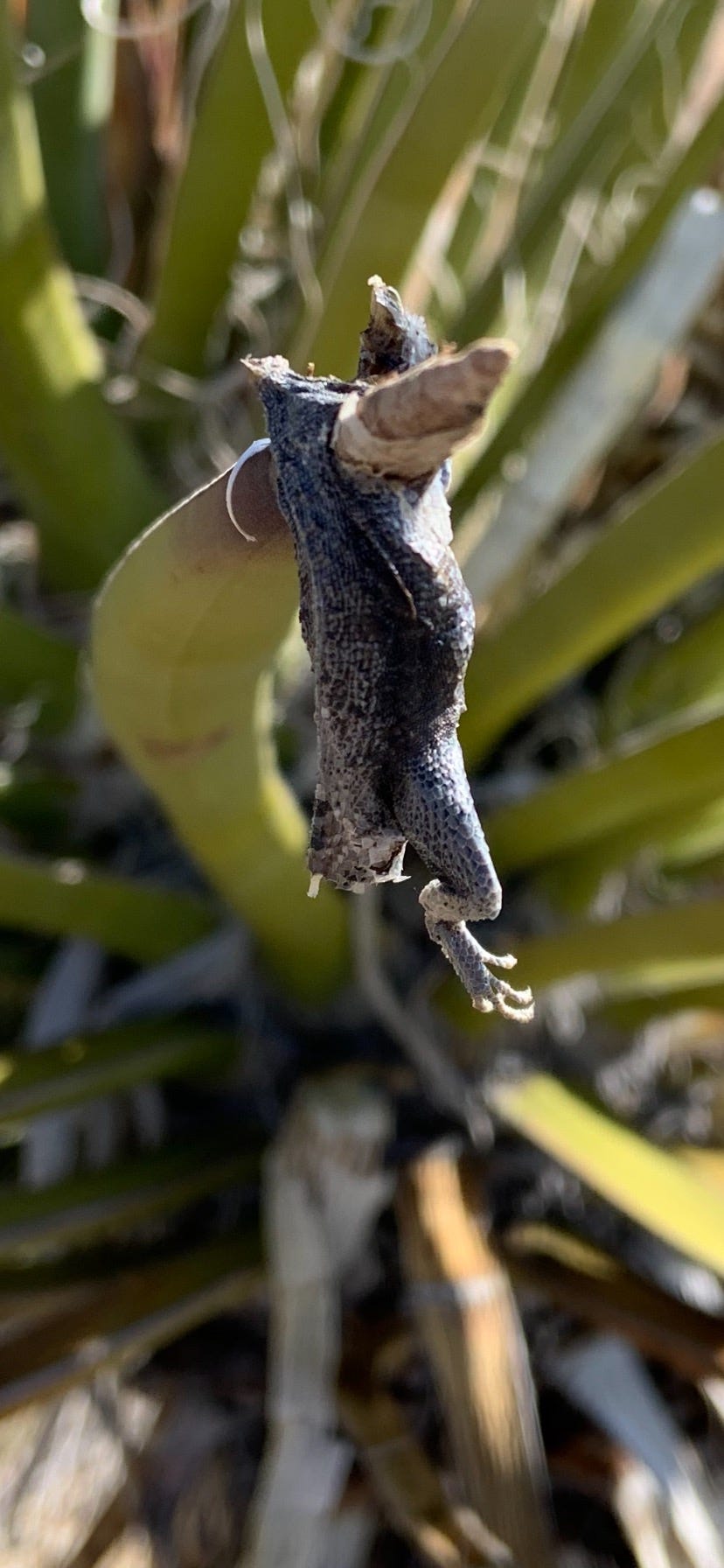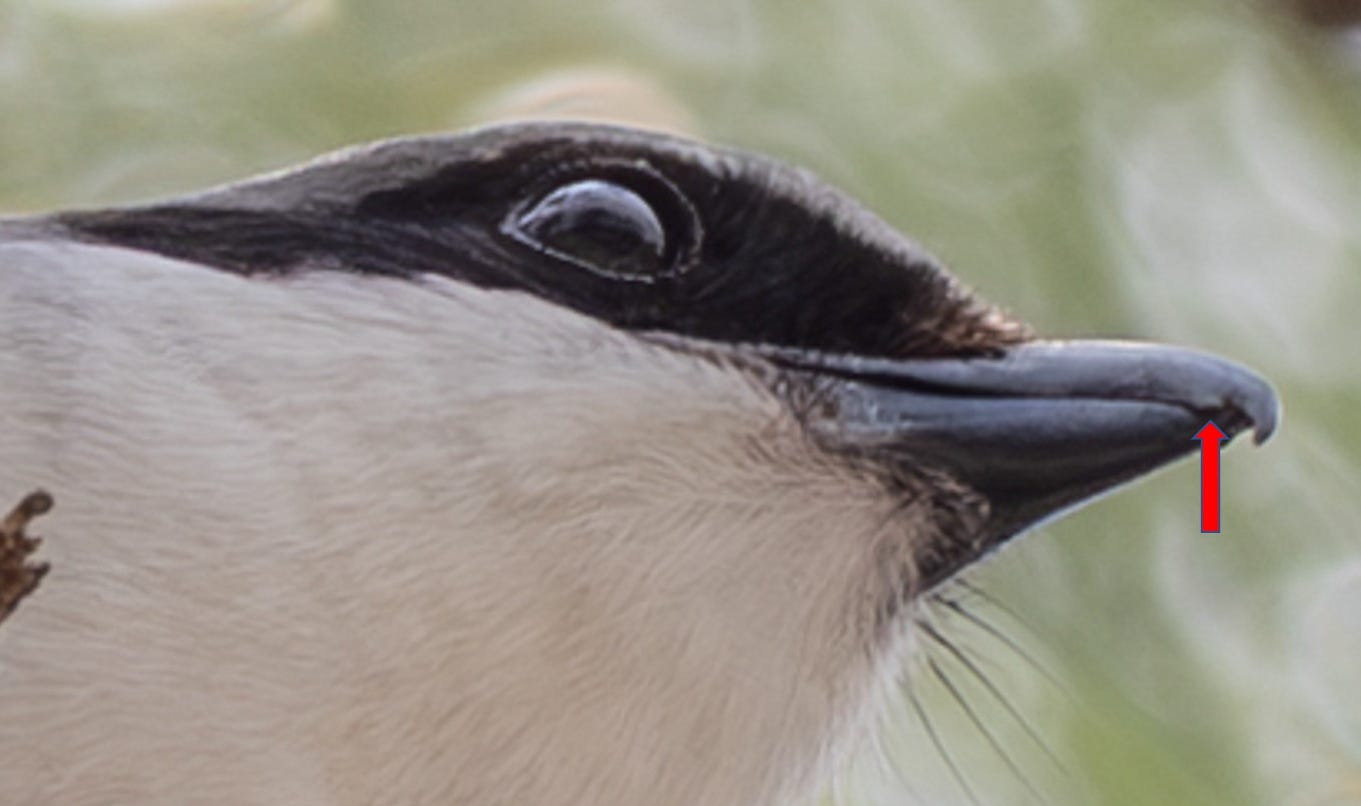The loggerhead shrike is a chunky little fluffball with a large head, bandit mask, and wicked curved bill. You’d be forgiven for mistaking it for a mockingbird–it has similar dusty gray feathers and white wing bars that it flashes as it hunts. The shrike, however, has lethal superpowers you might not suspect.
You may already know that shrikes hunt lizards, large insects, and small birds and mammals. Even more gruesome–you may have seen the dried remains of a hapless lizard that a shrike has impaled on a yucca spike and left to cure for a few days.
Fear the Shrike
What is cool–wait, is it okay to say that about watching one animal kill another?--is how the shrike dispatches its prey. I witnessed a shrike catch a young black-throated sparrow and give it a quick shake to kill it.
If I had the superpower to watch this in slow motion, I would have seen the shrike pinch the sparrow’s neck, severing its spinal cord. A 2018 study showed that loggerhead shrikes whip their prey back and forth with a force up to 6-g, which is about the amount of force you feel barreling downslope on a rollercoaster or if you’ve ever been rear-ended in a slow-speed car crash.
Shrikes also have tooth-like notches near the end of their hooked bills. These are called tomial “teeth” that help them paralyze their prey. Small raptors like falcons also have these notches and they seem to give an edge to smaller birds that can’t fly off with heavier mice or birds.
Be glad this little impaler is a tiny bird with no taste for human flesh.
Why do loggerhead shrikes stick carcasses on spikes? Is lizard jerky easier to eat? Both males and females cache their prey but males do it more often, perhaps to demonstrate that they are good providers. (Nothing says love like a little lizard leather.) Shrikes also spike toxic insects like Monarch butterflies to let the noxious chemicals break down for a few days before they eat them.
Fierce Little Fighters
So, what is a loggerhead? There are loggerhead sea turtles, which have large blocky heads–and so do these shrikes compared to their slender lookalikes, the northern mockingbird. When you fight with someone, you are at “loggerheads,” which might be a nautical term for cannonballs mounted on long poles. The loggerheads were used to soften tar to seal the decks of sailing ships–and also made useful weapons when sailors fought each other.1
Male shrikes fight too–they flutter their wings and bow at intruders. When two males show off near each other, they usually face away but might suddenly turn to face off or stomp their feet. Before building nests, a few nearby shrikes may gather, calling out and showing off for a few minutes. This helps them figure out where their territory is, find a mate, and let new birds know where others have already settled.
Shrikes can be polygynous. While they usually stay with one mate, a female will sometimes raise her first brood of babies with one male, then find a new mate and raise a second set of nestlings in the same season.
Given their cranky temper, shrikes need big territories–The Lives of Desert Animals in Joshua Tree National Monument (1964) estimated about 30 or 40 acres per bird and counted a half dozen birds between Quail Springs and the park entrance in Twentynine Palms.
So next time you spot a plump gray songbird perched on a fencepost, scanning the ground with sharp eyes, remember: behind that sweet song is a deadly precision. The loggerhead shrike is a reminder that the desert is full of unexpected contradictions—beauty and brutality, softness and strength—bound together in one fierce little package.
Not bad for a two-ounce fluffball. Whether it's skewering lizards like hors d’oeuvres or showing off a bug buffet to win over a mate, the loggerhead shrike proves that you don’t need size to rule the desert—you just need guts, grit, and a good place to hang your leftovers.
A shrike enjoys a sip of water on a late winter afternoon. Shrikes live in the area all year long. (Video Kat Talley-Jones)
Shakespeare—who coined the best insults—might have been using “loggerhead” in this way in Love’s Labours Lost (1588): “Ah you whoreson logger-head, you were borne to doe me shame.”
Leave your thoughts in the comments below. Please note that we do not allow anonymous comments. Please be sure your first and last name is on your profile prior to commenting. Anonymous comments will be deleted.
Feel free to share this article!
Are you subscribed?





"Lizard jerky" - love it - I don't know who you are but I always enjoy your writing. You have a talent :-)
G. LaCross
So happy I found out about this weekly post! I always enjoy it! Makes my Wednesdays ! Thanks Kat!